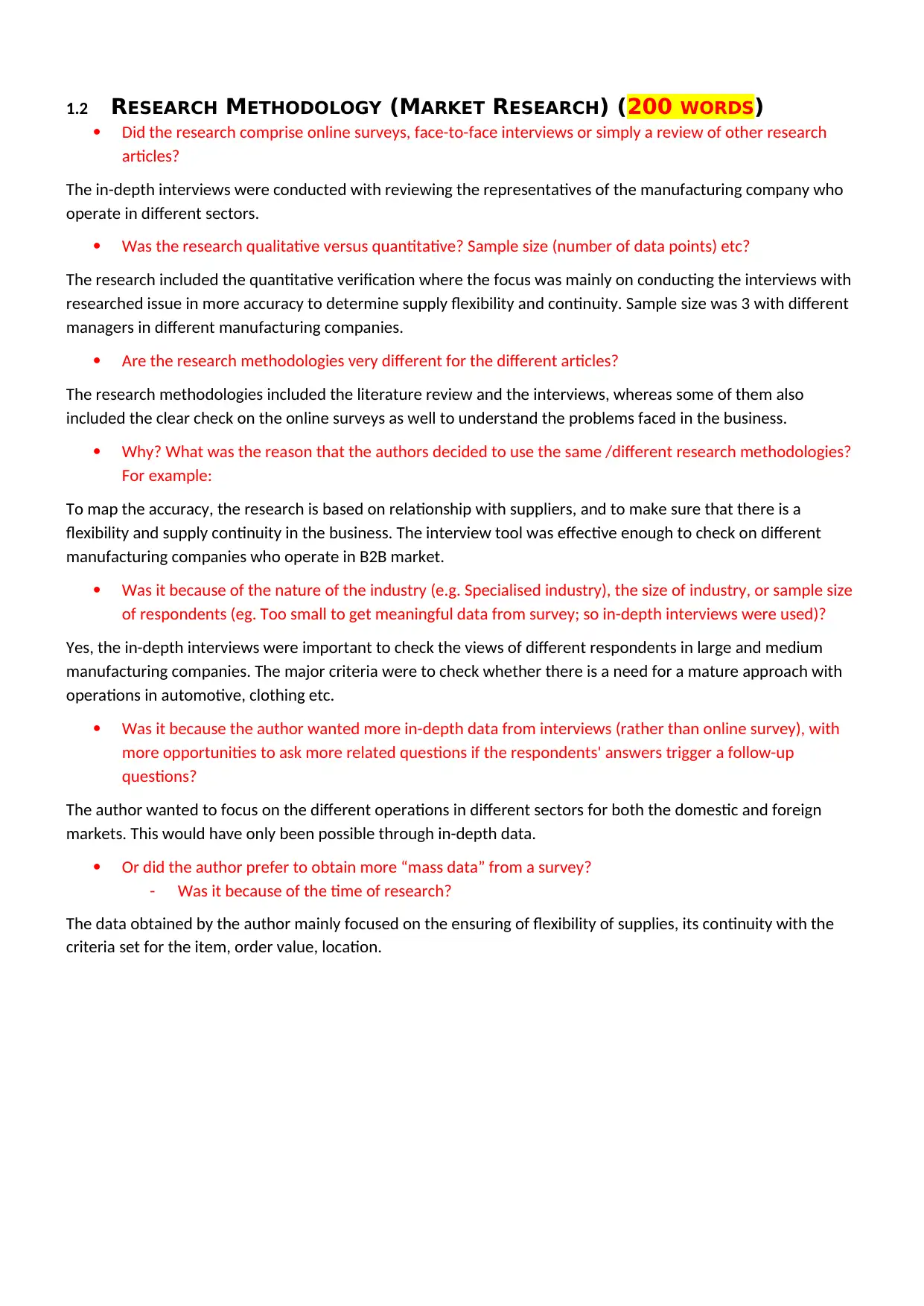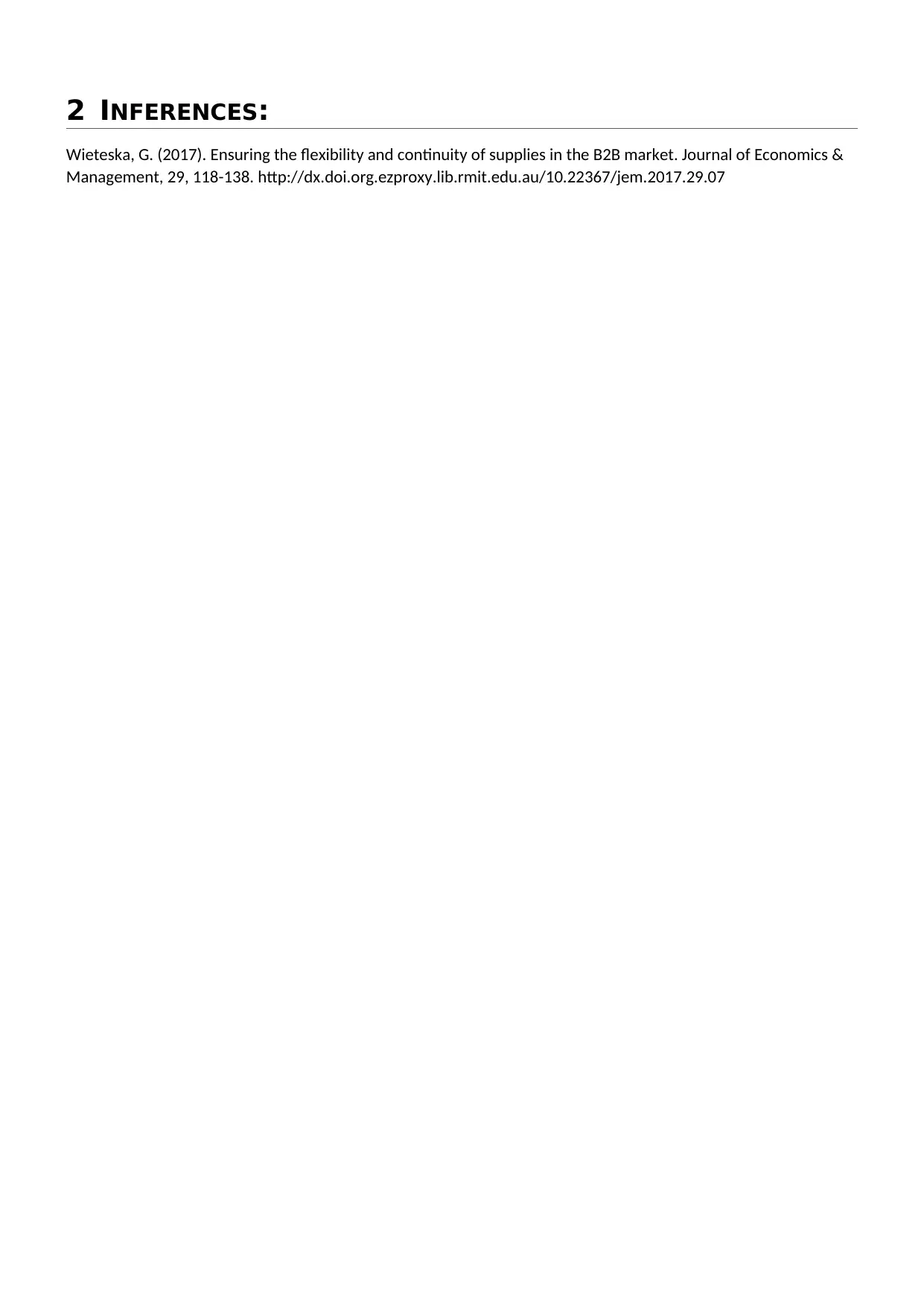Ensuring the Flexibility and Continuity of Supplies in The B2B Market - Research Analysis
VerifiedAI Summary
This research analysis focuses on ensuring the flexibility and continuity of supplies in the B2B market. The literature review discusses the dimensions of operations and theories used to support the article. The research methodology includes in-depth interviews with representatives of manufacturing companies. The findings suggest building a reliable supplier base through supplier performance management. The similarities and differences highlight the advantages of single sourcing and the factors affecting the selection of the type of sourcing. The study is based on how buyers assess the manufacturing capacities of potential parties in terms of production capacity.
![[object Object]](/_next/static/media/star-bottom.7253800d.svg)
![[object Object]](/_next/static/media/star-bottom.7253800d.svg)



